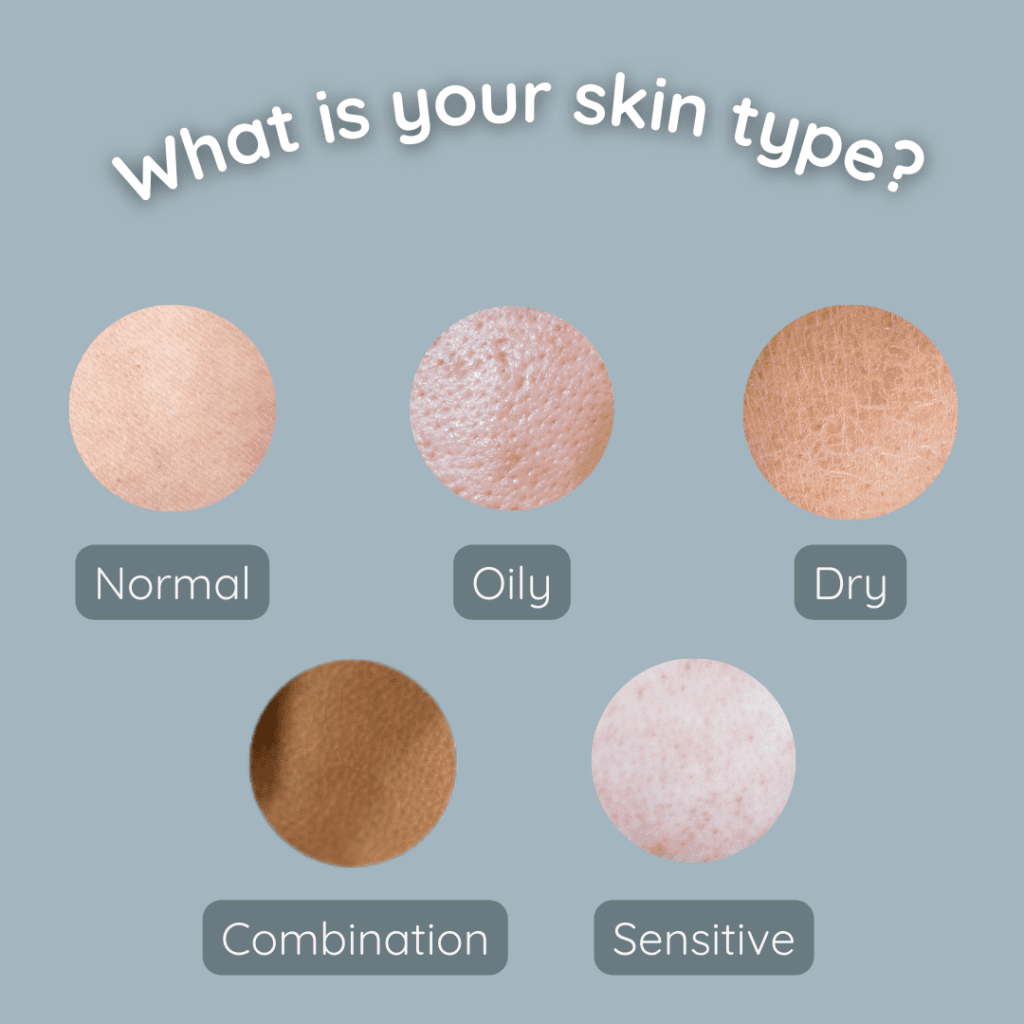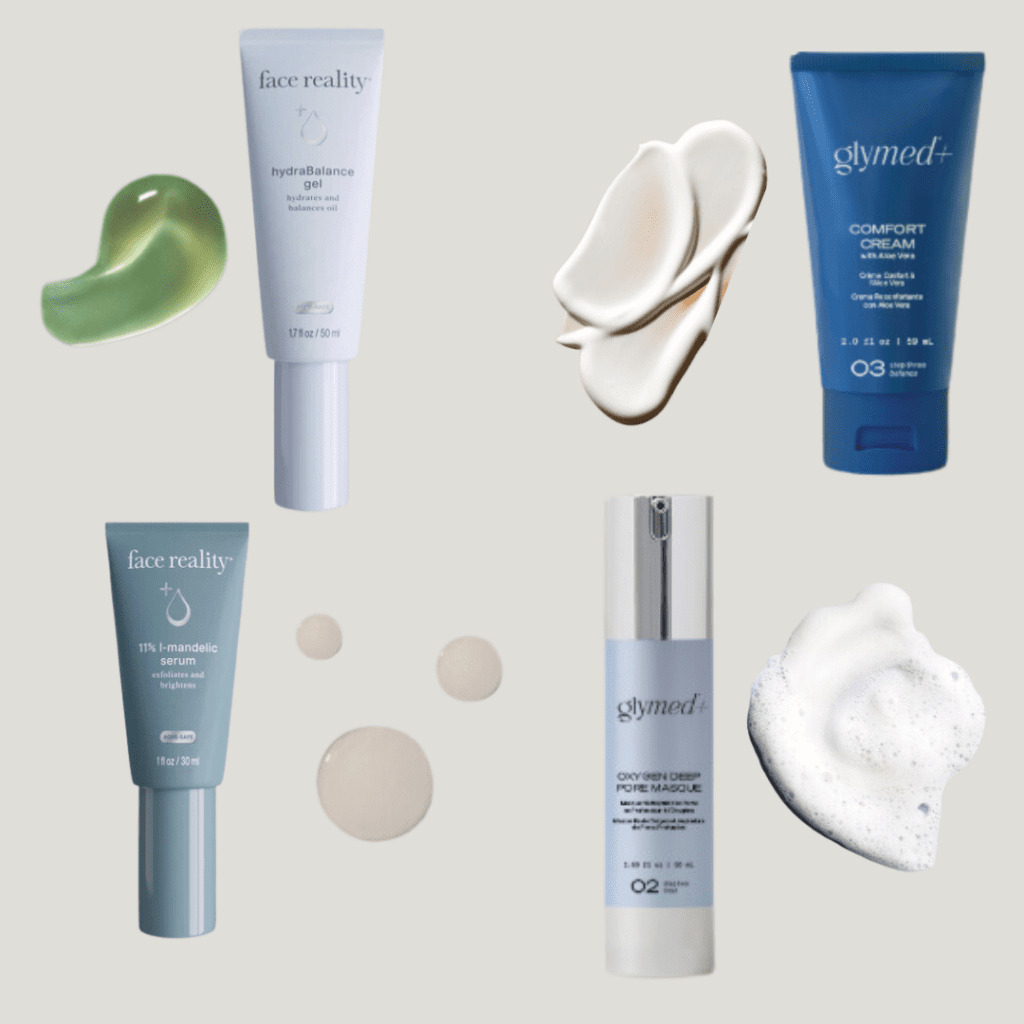How to Easily Determine and Care for Your Skin
5 Main Skin Types | How to Determine Skin Type | Common Mistakes | Skincare Tips | How Your Skin Changes

Ever wonder why your forehead gets shiny by noon while your cheeks stay as dry as the desert? Maybe you’re battling breakouts, dealing with dry patches, or feeling like your face is more sensitive than usual. Trust me, you’re not alone! The world of skincare can feel overwhelming, but it all starts with one key step: understanding your skin type. Once you figure out what your skin needs, you can curate a routine that helps you look and feel your best.
The 5 Main Skin Types
- Normal Skin: Balanced, not too oily or dry. If you fall into this category, you’re lucky! Normal skin generally has small pores, a smooth texture, and isn’t prone to sensitivity or breakouts.
- Oily Skin: This skin type produces excess sebum (oil), which can lead to shine, large pores, and frequent breakouts. Oily skin often feels greasy by midday, especially in the T-zone (forehead, nose, and chin).
- Dry Skin: Characterized by a lack of moisture, dry skin often feels tight, rough, or flaky. It may also be prone to irritation and premature aging due to the lack of natural oils.
- Combination Skin: The trickiest type to deal with! Combination skin has both oily and dry areas—typically an oily T-zone and dry or normal cheeks. It requires a balanced approach to care for the different zones of your face.
- Sensitive Skin: Easily irritated by products, sensitive skin may react with redness, stinging, or itching. This skin type can be challenging to manage, but with the right products, you can soothe and protect it.

How to Determine Your Skin Type
Ready to unlock the secrets of your skin? Here’s a simple guide to help you figure it out!
The Bare Face Method
- Cleanse Your Face: Start with a gentle cleanser to remove any makeup or impurities. Pat your skin dry and leave it bare for about an hour. This gives your skin a chance to reset.
- Observe Your Skin: After an hour, take a good look in the mirror. Here’s what to look for:
- Oily: If your skin looks shiny all over, you likely have oily skin.
- Dry: If it feels tight or has dry patches, then it’s probably dry skin.
- Normal: If it feels comfortable and looks balanced, you’ve got normal skin.
- Combination: If your T-zone (forehead, nose, chin) is shiny but your cheeks feel dry, that’s combination skin.
- Sensitive: If you notice redness, itching, or a stinging sensation, you may have sensitive skin.
The bare face method is a straightforward approach to determine your skin type by observing how your skin behaves when it’s free from products. This method offers an accurate assessment of your skin’s natural condition, helping you make better-informed skin care choices tailored to your unique needs.
Why Knowing Your Skin Type is Important
Understanding your skin type is like finding the right keys for your front door. If you use the wrong key (or skincare products), you might just end up frustrated and locked out of that glowing skin you dream of. When you know your skin type, you can choose products and routines tailored specifically for your needs. This not only helps address issues like acne or dryness but also prevents potential problems from occurring in the first place.
Common Mistakes to Avoid
While trying to figure out your skin type, it’s easy to make a few blunders. Here are some common pitfalls to watch out for:
- Relying on Products Alone: Don’t assume your skin type is whatever the last product you used says it is. Some products can change how your skin behaves temporarily, but that doesn’t mean your skin type has changed.
- Ignoring Changes: Your skin can change with seasons, diet, and stress levels.For example, you might have oily skin in the summer but lean towards dryness in the winter. Keep checking in with your skin!
Over cleansing: Washing your face too frequently, or using harsh cleansers, can strip your skin of its natural oils and cause it to overproduce sebum.
Skincare Tips for Each Skin Type

- Normal Skin: Lucky you! Keep it simple with a gentle cleanser, a lightweight moisturizer, and sunscreen. Regular exfoliation can help maintain that balance.
- Oily Skin: Opt for non-comedogenic products (those that won’t clog your pores). Use a foaming or gel cleanser, and don’t skip a good exfoliant. Lightweight, oil-free moisturizers are your best choice!
- Dry Skin: Go for cream-based cleansers and rich moisturizers packed with hydrating ingredients like hyaluronic acid. Incorporate a hydrating serum and face mask for an added boost!
- Combination Skin: Look for balancing serums and multi-tasking moisturizers. Avoid pore-clogging ingredients.
- Sensitive Skin: Stick to fragrance-free, balancing products. Keep it minimal and soothing with calming ingredients. Avoid harsh exfoliants and hot water!
The key to getting your skin to its optimal state is getting your skin barrier healed and healthy. Having a balance of exfoliation and hydration can be tricky so be sure to ask a professional. They can get you access to high quality products that are vital for your skin to thrive. Shop Here For High Quality Products.
How Your Skin Type Can Change
Keep in mind that skin isn’t static. Factors like age, climate, diet, and hormonal changes can influence your skin type over time. So, don’t hesitate to reassess your skin every few months and tweak your routine as needed!
Finding your skin type is like discovering the secret recipe to your best skin yet. With the right knowledge, you can pick products that genuinely work for you and bid farewell to those pesky skin issues.
Remember, skincare is a journey, not a sprint. Be patient with yourself, and don’t hesitate to reach out for help if you’re feeling stuck!
Ready to glow? Let’s start this skincare journey together! Shop Now.
Follow on Instagram @saltycoveskin